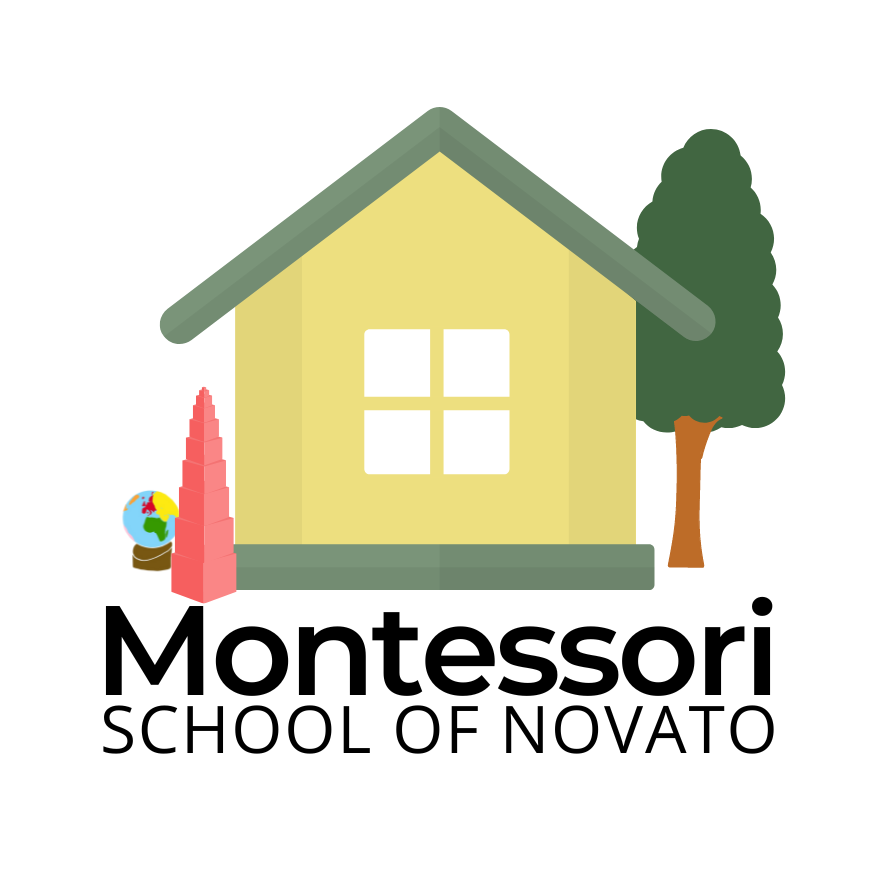Montessori School of Novato gives children the tools they need to succeed not only in the classroom, but in life.
Montessori Education
Montessori Education is a system for the education of children from birth through age 18. It is based upon principles developed by Dr. Maria Montessori throughout her life.
Our Philosophy
The focus of this system is the development of materials, educational techniques, and observations which support the natural development of children. The teacher in a Montessori classroom serves less as an "instructor" and more as a guide and facilitator. Children are encouraged to "learn how to learn", thus gaining independence and self-confidence. Because the method is based upon developmentally appropriate activities, the child often learns through the process of education-by doing.
The Montessori school is designed to accommodate various stages of development in children which occur in roughly three year cycles. From birth to three years of age the child is absorbing directly from the environment, almost as a sponge. It is during this phase that many language and motor skills are acquired without formal instruction. During the second phase from three to six years of age, the child reaches a different stage in which repetition and manipulation of the environment are critical to the development of concentration, coordination, independence, and sense of order. The child learns skills for everyday living, sorting, grading, classifying- all of which lead to the development of writing, reading and a mathematical mind.
When the child reaches the next phase of development, ages six to nine, the imagination of the child is key to learning. At this age there is an increasing awareness of the world and an interest in its wonders. The classroom can now excite the child by using this increased imagination to explore the universe. During this phase the child is presented with "the big picture", an overview of the interrelatedness of things. The curriculum works from the large concept to the more refined. Concepts are introduced through hands-on materials which encourage and engage the child and assist in an understanding of concepts before they are committed to memory.
As the child enters the next phase, from nine to twelve, the worlds is an ever-expanding place. The horizons of the imagination increase and concepts may be presented and abstracted with fewer manipulative materials. The students' hands-on activities broaden in scope and include practical application outside the classroom. Projects become more involved and diverse in nature.
Because the child goes through these various stages, Montessori classrooms are organized into three year age groupings. This allows a greater flexibility in meeting each child's individual needs and permits the child to develop with fewer social transitions. The environment becomes the "teacher', with the child as the initiator of his/her own education.
The Montessori approach to education was re-introduced in the United States around 1960. By today's estimates, there are at least 4,800 Montessori schools in the country, serving some 400,000 children from infancy through secondary levels, in both public and private settings.
Special training is required to become a Montessori teacher. Montessori teacher education is available in almost 100 institutions located throughout the U.S. and an additional number in other countries of the world, in both special-purpose institutions and college/university settings. An organization formed in 1991, the Montessori Accreditation Council for Teacher Education (MACTE), offers an accreditation process for Montessori teacher preparation courses and is supported by Association Montessori Internationale and the American Montessori Society.



